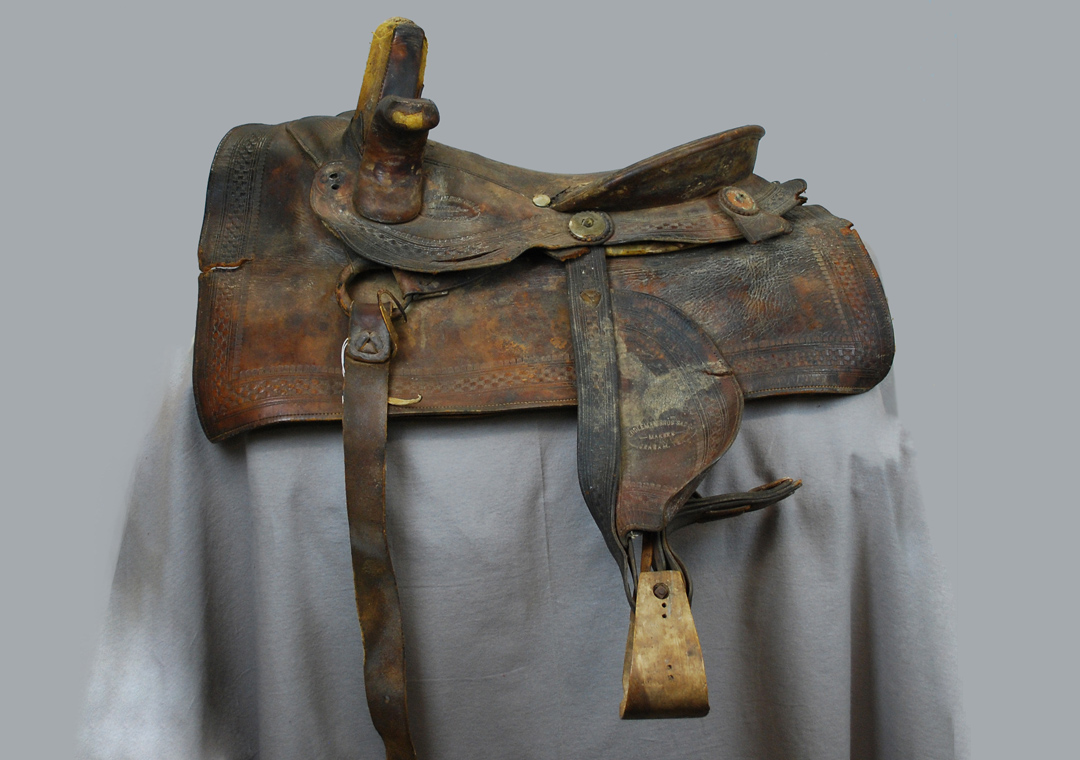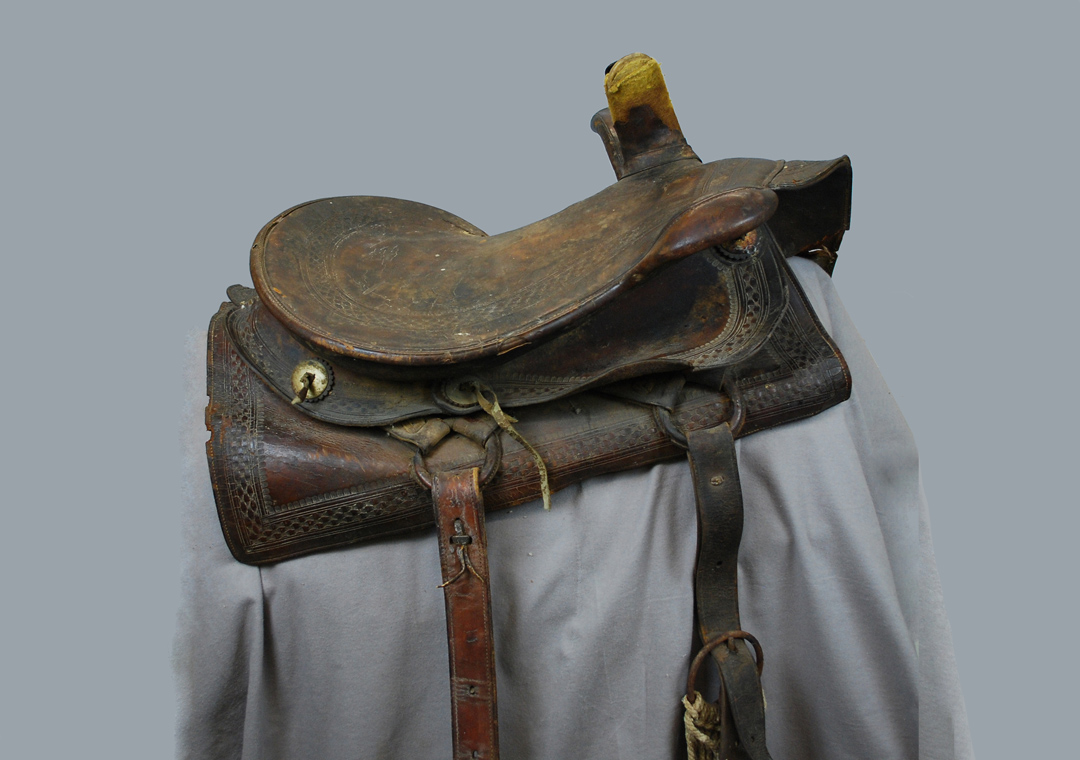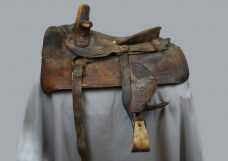This is a leather side saddle. It was made by the Eddleman Brothers of Graham, in Young County, Texas. This saddle was ordered by Eugene Logan for his daughter Kate. He was a former Texas Ranger, and the town of Logan, NM was named after him. This saddle is made in the Western style, with two horns for more stable riding. It is of a fairly simple design and not heavily ornamented.
Side saddles have been around for a long time. Riding aside (as opposed to astride) put the female rider and her clothing on display, and illustrations showed it from 12th century onward. Earlier versions did not provide much support or much of a way for the rider to control the horse. It is thought that women were initially led by a male rider astride another horse. Women might also ride pillion, or on a padded seat, facing sideways, behind the male rider’s saddle. In the days of Queen Elizabeth I, newer designs incorporating a different style of saddle horn and a leaping pommel were developed. These innovations allowed for more control and more active riding.
Proper posture is essential for riding sidesaddle safely. The right leg drapes over the upper pommel, with toes turned in towards the horse. The left leg, with spurs, is resting in the stirrup, under the leaping pommel. This lower pommel is what allows a rider to be able to stay mounted while jumping or riding on the hunt. The crop, or whip, held in the right hand and draped over the other side of the horse, stands in for a method to signal the horse where an astride rider would use their right leg.
There are different styles of sidesaddle, including Western and English. This particular saddle, with a heavier square leather skirt, is of the Western style of sidesaddle. It is very utilitarian, or at least as utilitarian as a side-saddle can be. A talented rider would still be able to carry out many ranch tasks on a saddle like this despite the more decorative purposes of side saddles. Though the side saddle is not as common as it once was, it has seen an increase in popularity since the 1970s in the United States.
Riding sidesaddle had its risks. The same leaping pommel that added stability for jumping also tended to lock women into place. Men’s saddles were likely to allow them to be thrown clear of a falling horse, while the sidesaddle would tangle legs, catch on skirts and petticoats, and potentially pin the female rider under a flailing horse. It was not unknown for women to break their backs in such a fashion. The safety apron, or skirt that was open in the back and meant to cover riding breeches or jodhpurs was a bit safer, but a later invention. While riders on the East Coast tended to lean towards London fashions and prefer riding sidesaddle, West Coast and rural riders, or equestriennes, preferred to ride astride in divided skirts. Sidesaddle riding began to fall out of fashion around the same time that women earned the vote, and in many ways, riding astride started to be transformed from a symbol of the libertine, the masculine woman or a heretic, to a symbol of a liberated woman seeking freedom.





